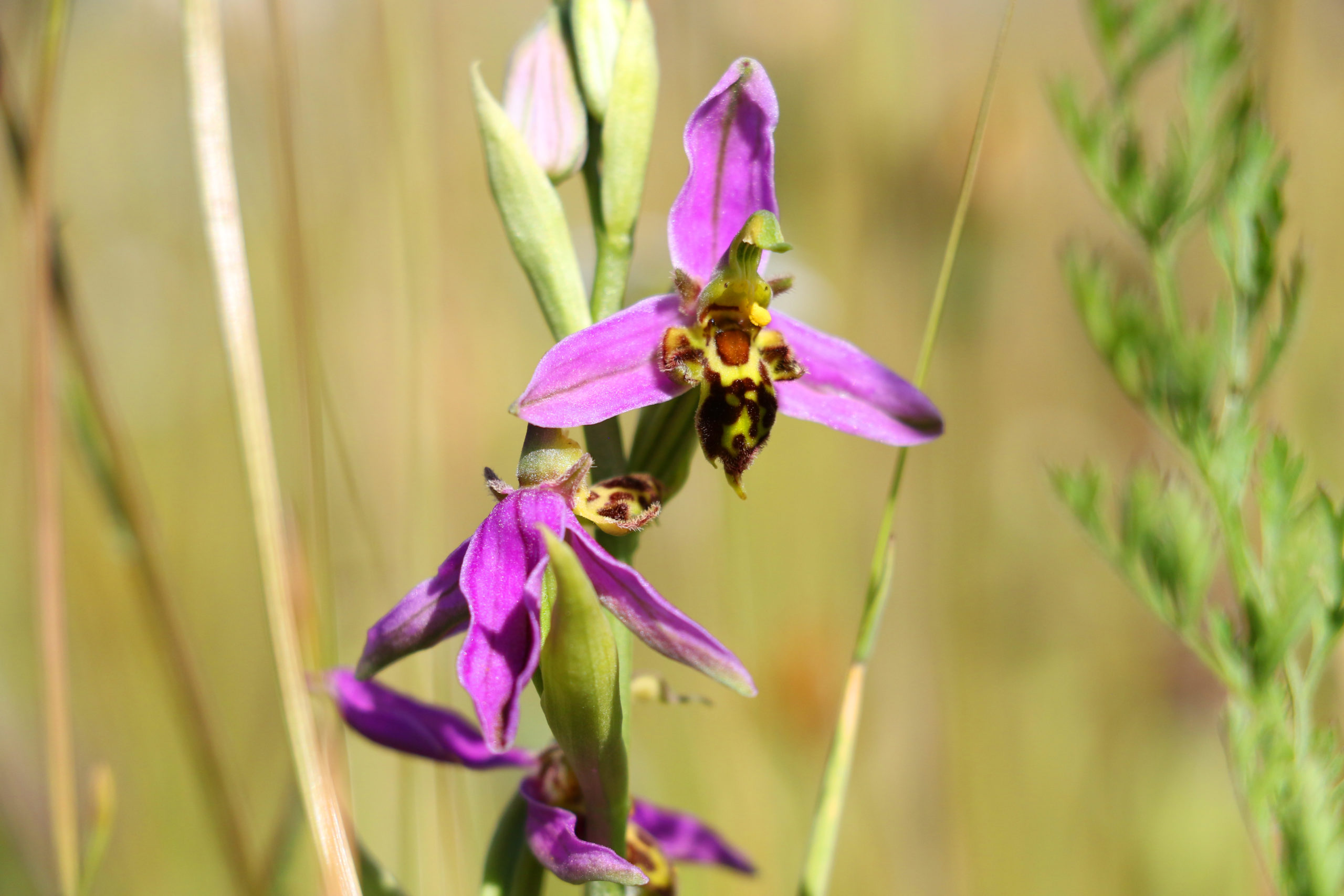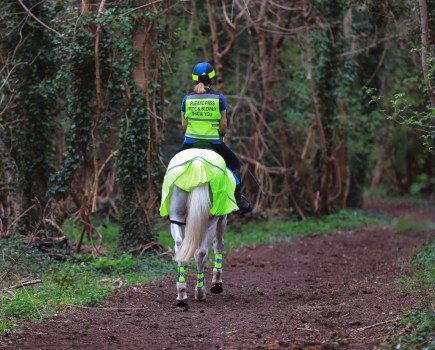A scheme involving the use of donkeys to manage a wildflower meadow has blossomed into a dazzling display of orchids. At the end of last summer, rescued donkeys Paddy and Kelley from The Donkey Sanctuary were walked through a wildflower meadow at the charity’s Sidmouth sanctuary as part of their routine training and exercise.
Staff hoped that as the donkeys walked through the meadow, their footfall and disturbance would knock seeds from wildflowers, helping to fix plant seeds into the soil and create good conditions for seed germination in the spring. The wildflowers are now blooming, and the charity’s conservation team are recording an increase in numbers and species of wildflower.
“Our conservation team and volunteers, who have been managing the meadow for a few years, have counted record numbers of bee orchids and common spotted orchids, while southern marsh orchid and ragged robin are now blooming there for the first time,” said a spokesman for The Donkey Sanctuary.
“As part of our conservation work, we explore ways for donkeys to help manage habitats and, in turn, benefit from living in an enriched environment. Donkeys benefit nutritionally and can express a wider range of behaviours when foraging in these habitats, which is important for their welfare and wellbeing.”

Alongside the resident donkeys playing their part in managing grassland, volunteers work with the conservation team to manage our their in ways that encourage wildlife and increase biodiversity. One example includes using low-impact methods such as traditional scythes to cut grass and bracken, causing less disturbance than modern machinery.
At the charity’s visitor site in Sidmouth, maintenance teams have revised their mowing schedules and are working to encourage wildflowers to thrive along the miles of memorial walkways that criss-cross the site.
“Donkeys and humans are not the only beneficiaries of our conservation work,” added the spokesman. “Native grasses and wildflowers provide food, shelter and breeding sites to various insects. These insects are, in turn, essential food for threatened farmland birds and bats, which we regularly record at our sanctuaries.”









